Sharbat Gula was a refugee in the Nasir Bagh refugee camp in Peshawar, Pakistan during the Soviet Invasion. She was 12 years old when National Geographic photojournalist Steve McCurry photographed her.
Her face came to be known as the “Afghan Girl.”
Tony Northrup, a professional American photographer, posted, and then deleted, a video slamming the authenticity and integrity of Steve McCurry’s photo.
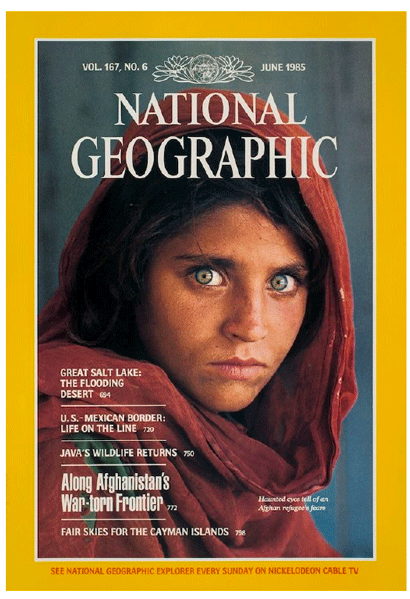
McCurry’s photojournalism highlights numerous United Nations Sustainable Development Goals, including No Poverty, Quality Education, Gender Equality.
His photography examines the conditions in which people, especially young girls and women, are unable to afford even basic nutritious meals and face life-threatening conditions every day.
Speaking about the involvement of the United States in the Middle East, McCurry states that then-President George Bush’s ‘War on Terror’ did not begin with 9/11.
“[America] began sending billions of dollars to support the mujahideen in the early 1980s against the Afghan government, during the Soviet invasion,” remarks McCurry.
There is a long history of the American government funding anti-government operations in countries across the world. According to Politico, America has “nearly 800 military bases in more than 70 countries and territories.”
To ensure no country misuses their power, institutions need to dedicate increased attention to the SDGs for Peace, Justice and Strong Institutions and Global Partnerships.
A controversial claim
A YouTube video by Tony Northrup details the conditions under which McCurry photographed Gula, then an unknown refugee girl, at her school.
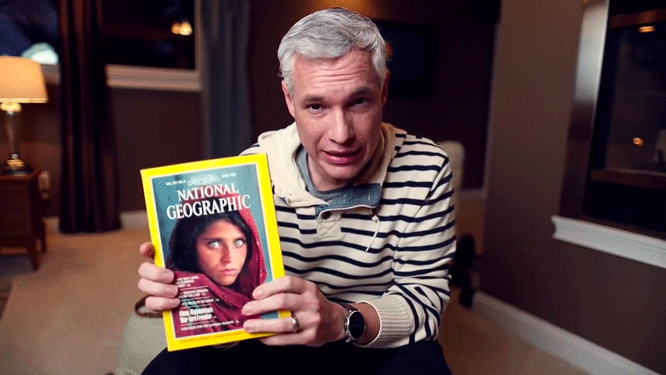
Within days of posting the video, due to pressure from McCurry’s lawyers and journalists across the world, Northrup took down the video. He later posted another video, backtracking his remarks, and focusing instead on the quality of cameras used by McCurry, among other things.
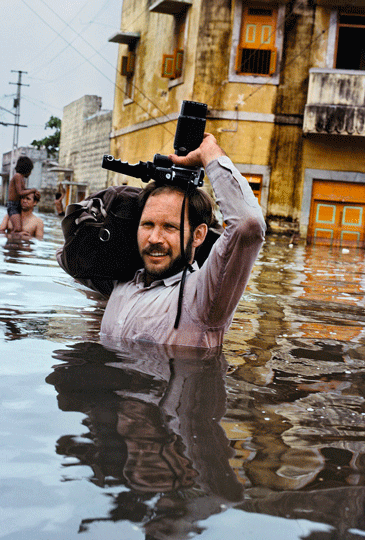
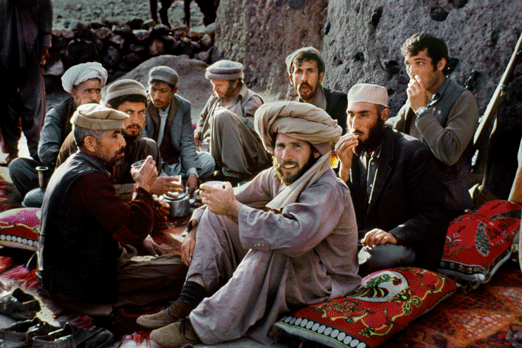
In his video, Northrup critiques the pose. He says “He (McCurry) poses her like an 80s’ glamour shot [...] shoulder tilted towards the camera, forehead forward, nice light to illuminate the eyes and direct eye contact – something that she would never ever do.”
Further, Northrup claims that McCurry took Gula, alone, in a separate corner of the room to take the photo.
Northrup then quotes the magazine cover: “Haunted eyes tell of an Afghan refugee’s fears.” Northrup says the fear was not of war, but of an “unfamiliar man, the fear of her personal boundaries being breached.”
“She had nothing else to be afraid of that day, except for Steve McCurry,” asserts Northrup.
Northrup then wrongly states that Gula’s mother was killed in a bombing during the Soviet Invasion.
Gula, in an exclusive interview with BBC in 2017, had said that her mother actually died of appendicitis when she was eight.
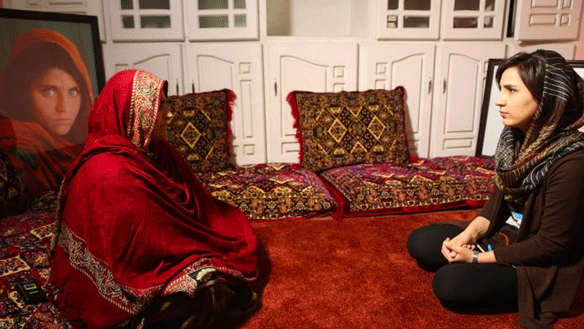
Northrup’s video is from two years later in 2019. He shames McCurry for not properly reporting the 12-year-old Gula’s story, without doing his own research, which would have included reading the BBC’s article about Gula.
Northrup then critiques McCurry and his team for not spending much time with Gula during the 2002 interview, while simultaneously claiming that reaching out to her was not even necessary. He makes several statements on Gula’s behalf, all while sharing no sources to support his remarks. At one point, he asks the viewer to imagine that they are a war photographer, but what does Tony know about spending decades in the middle of airstrikes in 1980s Afghanistan and Kuwait?
Another side of the story
McCurry’s account of the events is quite different.
After working in India for a few years as a freelance journalist in the 1970s, McCurry disguised himself in Afghan clothes and illegally crossed the border into Afghanistan. Upon crossing the border, McCurry recalls how he “came across about 40 houses and a few schools that were just bombed out.”
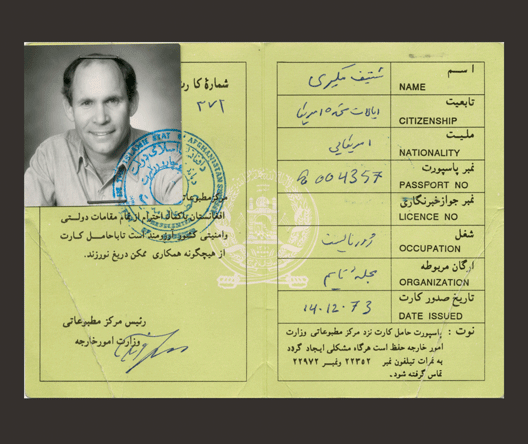
When McCurry saw villages being destroyed with helicopter gunships, he realized how “profound” the situation was.
"I got completely caught up in the story. That's when I knew that this was what I did -- this was me,” he says.
In 1985, McCurry came across a tent that was being used as a makeshift school for girls. Gula was one of the students. McCurry recalls that was taken aback by Gula’s striking, “haunting” eyes.
In an interview with FORA.tv, McCurry explains that he did not want to make her uncomfortable, but knew hers was the shot he really wanted to take. With the permission of their teacher, he took photos of several girls inside that tent, with everyone present, before asking Gula.
McCurry explains: “It’s not really correct for a man to photograph [...] Afghan women past puberty, but in the case of a girl it’s totally permissible. ”
He then mentions that the teacher “coaxed” Gula into not being shy while being photographed, telling her to reveal her face so that “the world would see it and know her story.”
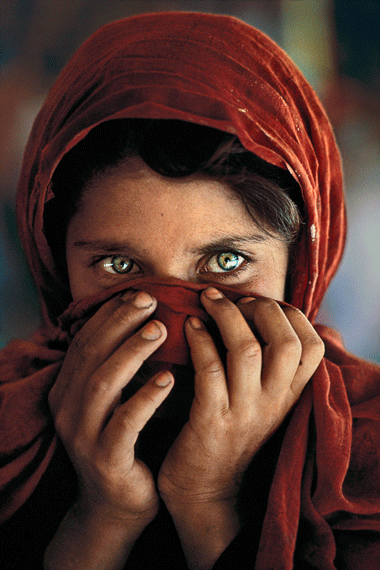
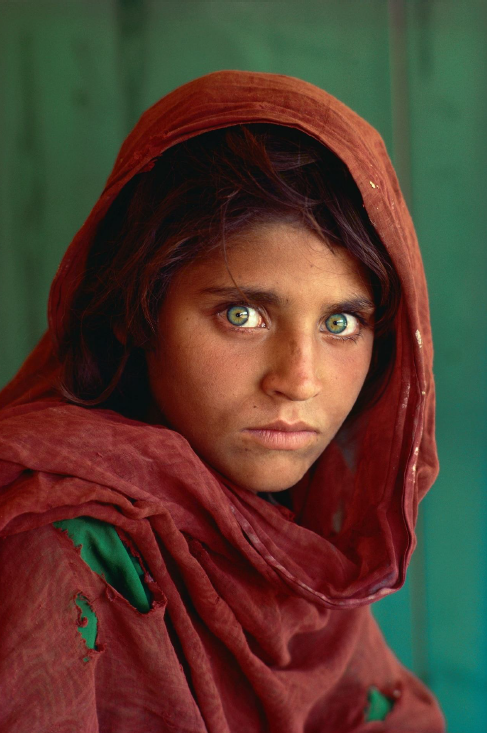
In the first photo, Gula is covering her face and not making eye contact with the camera. In the other photo, she is. McCurry submitted the first image as his final selection, and the other images as "seconds" - images that were not selected by the picture editor for publication.
The picture editor advised against using the second image, calling it “too disturbing”.
It was the then magazine editor, Bill Garrett, who finalized that second image as the cover of the National Geographic magazine.
In 2002, McCurry and his team went looking for Gula, who at that time was only known as the “Afghan Girl”. With this trip and Gula’s story finally out in the world, National Geographic created The Afghan Girl’s Fund to improve girls' access to education.
During that brief meeting, Gula told McCurry that she was hopeful to get her own daughters the education that she never received, and that she wanted to start a charity to educate girls.
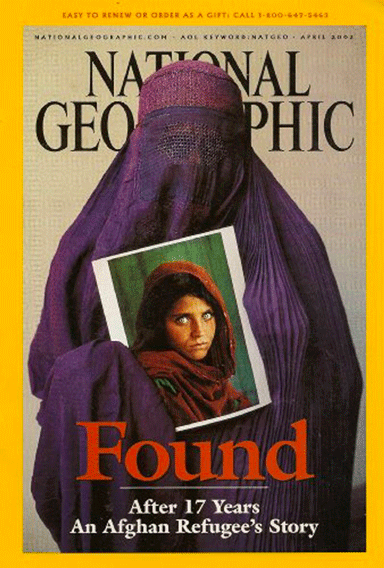
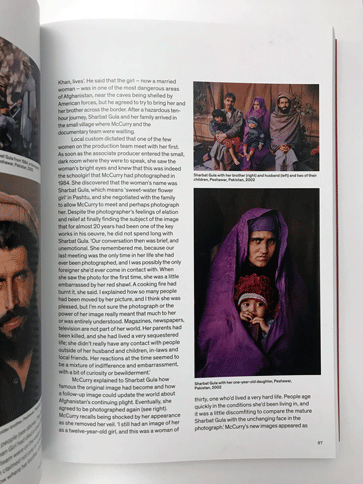
McCurry remembers that Sharbat was embarrassed over her red shawl in the photo, saying she had burnt it in a cooking fire.
Sharbat gained attention again in 2016 when Pakistan’s Federal Investigation Agency arrested her over charges of fraudulent ID and papers, so McCurry and the National Geographic team pressured Pakistani authorities to release her.
Once released, the then President of Afghanistan, Ashraf Ghani, met with her and helped her find a proper place to live with her family. The government now pays their rent and personal expenses.
Northrup called Ghani’s help a “PR stunt”.
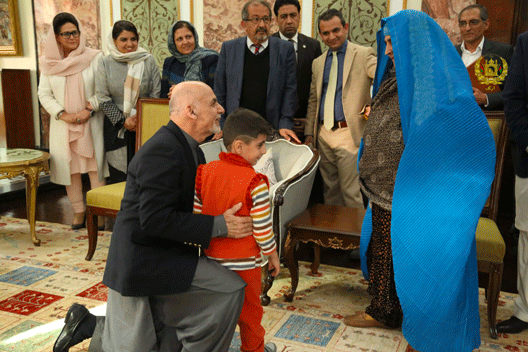
However, with the Taliban now taking control of Afghanistan, Sharbat’s situation is uncertain, as are the lives of countless girls and women.
To see Steve McCurry’s photos and read his stories, visit his website.
Visit Malala Fund and Afghan Girls Financial Assistance to support girls and women in need.
